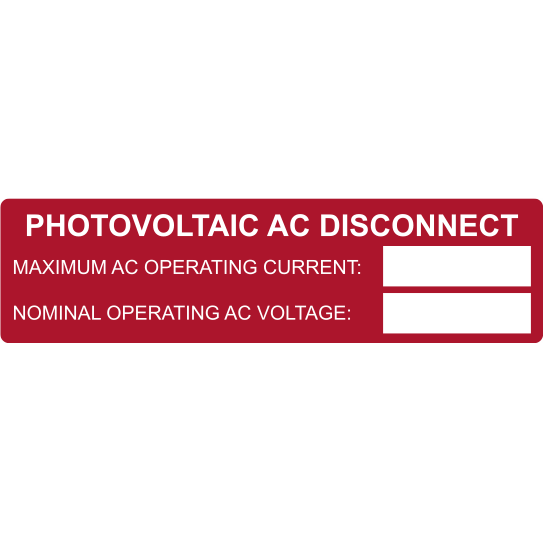
Solar power is an increasingly popular form of renewable energy that harnesses the sun’s energy to create electricity. This revolutionary technology, however, comes with its own unique set of safety requirements. One critical component of solar safety is the proper use of solar warning labels.
Demystifying Solar Warning Labels
Solar warning labels are an integral part of any solar installation, designed to alert users, installers, and emergency personnel to the inherent risks associated with solar power systems. Manufacturers explicitly design these labels to be highly visible and durable, typically employing bright colors and weather-resistant materials to ensure longevity.
What should be included on a solar warning label depends on its purpose. In general, these labels should clearly indicate the nature of the hazard, such as electrical shock risks, the presence of live wires, or high voltage areas. They should also provide instructions or precautions to be taken around the specified hazard. For example, there are many different “Warning Labels”, “Danger Labels”, “Caution Labels”, “Notice Labels”, “Voltage Labels”, and many others.
The placement of solar warning labels is crucial. We should position these labels in locations where they are easily visible and directly associated with the potential risk. Common places for these labels include solar panels, inverters, batteries, junction boxes, and disconnect switches.
The National Electrical Code (NEC)
A crucial regulatory body within the solar industry is the National Electrical Code (NEC), which was instituted by the National Fire Protection Association. The NEC determines the safety norms for electrical use in residential, commercial, and industrial settings across the United States. It is not merely advisory; numerous states have legally adopted it as a rule book.
The NEC undergoes regular updates to include new technological advancements and enhance safety measures. Its purpose is to provide a set of regulations that ensure the safe installation and use of electrical equipment, including solar power systems. The code dictates everything from wiring methods and materials to equipment construction and performance.
Importantly, the NEC actively dictates the necessary information, design, and placement of solar warning labels to standardize them and effectively communicate any potential hazards.
In Conclusion
As we increasingly gravitate towards eco-friendly and renewable energy sources, solar power has emerged at the forefront. However, as we harness this technology, we must actively ensure that we never compromise safety. In this context, solar warning labels play an indispensable role in highlighting potential risks and delivering clear safety messages to anyone engaging with a solar power system.
Moreover, adherence to guidelines and regulations laid out by bodies like the NEC is crucial to uphold safety standards. By sticking to these codes and practices, we not only enjoy the advantages of solar energy but also safeguard users, installers, and emergency responders. As our reliance on solar power increases, gaining knowledge about and implementing these safety precautions becomes increasingly vital.

